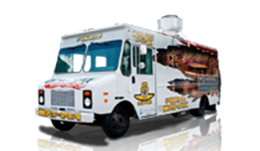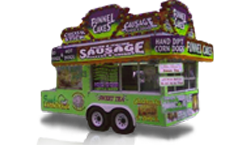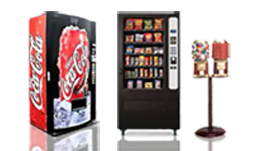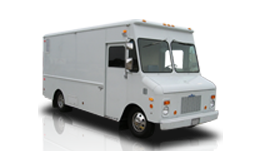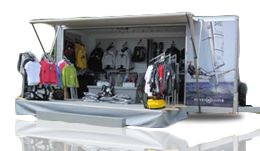Single Axle vs Tandem Axle Day Cabs

Day cabs are perfect for local hauling needs. Compared to sleeper trucks, day cabs have better fuel efficiency. Their lighter and shorter chassis allows better maneuverability especially in narrow roads and traffic congestions. Most day cabs have rear windows, providing a safer way to hook uploads or move in reverse. What’s best is that day cabs are a good investment than sleeper trucks. If you’re looking to buy a day cab, you need to consider how you will use it for business. As such, the axle configuration can be a deciding factor when buying a day cab. Let’s find out when a single axle or a tandem axle day cab works best.
What’s Inside
What are Axles?
Axles are rods or shafts rotating the wheels and supporting the weight of a day cab. It’s where the brakes, suspensions, and wheels of a truck are attached. Most axles are made of carbon steel or nickel steel. In cars, it’s easy to determine the number of axles. Every set of wheels uses one axle. So, if a car has four wheels, it means that the car has two axles. For day cabs, it’s a different scenario.
This is because they use a different suspension system than that of cars. The axles of a car only send the driving torque on its wheels. But they don’t necessarily bear the weight of the car. Day cabs use a live-axle suspension system. The axle doesn’t only send the driving torque on the wheels but also bears the weight of the day cab and its trailer load.
There are three main categories of axles. These are the front axle, rear axle, and stub axle. Front axles assist with steering. Rear axles deliver power and rotate the wheels. Stub axles support only a single wheel in a set.
What is a Single Axle Day Cab?
A single axle day cab is a large truck that uses a single axle in the rear. Their lengths are shorter to allow longer trailers. Single axle day cabs are designed for the city, local, and regional deliveries. They can handle a gross weight of up to 65,000 pounds. Using a single axle in a day cab reduces the load weight it can handle. But since they are lighter and shorter, they are easier to control and turn much tighter.
What is a Tandem Axle Day Cab?
A tandem axle day cab is a large truck that uses two drive axles. The day cab engine sends power to the lead axle while a shaft sends power to the trailing axle. Drivers of a tandem axle day cab can switch the drive power between the front wheels or divide it between the two axles. Tandem axle day cabs have incredible strength and carry a load of up to 80,000 pounds. Applying power evenly to the two drive axles result in a smooth start and stop positioning. Tandem day cab axles are designed for heavy hauls on construction sites, fuel plants, and warehouses.
Pros and Cons of a Single Axle Day Cabs
Single axle day cabs are generally economical than tandem axle day cabs. They also have less fuel and maintenance costs. It’s easy for them to get in on tight spaces. It’s also easy changing their tires. Because single axle day cabs are lighter, drivers exert less effort to maneuver the truck.
However, single axle day cabs cannot accommodate heavier loads like tandem axle day cabs. They can only carry a weight limit of 65,000 pounds. In case a tire of the single axle day cab blows, there’s no way the truck can move. There’s also not much space in the cabs of these types of trucks, making it uncomfortable for drivers.
Pros and Cons of a Tandem Axle Day Cabs
Tandem axle day cabs can haul heavier loads than single axle day cabs. When the power is divided between the two axles, they offer a smoother ride. Drivers of a tandem axle day cab can also switch the power between the front wheels or within the two axles. This means better driving control as the situation needs it. In case a tire of the tandem axle day cab blows, the truck can still move at a slower speed.
Tandem axle day cabs are more expensive than single axle day cabs. They also have higher fuel and maintenance costs. It’s hard for tandem axle day cabs to get in on tight spaces. It’s because they are heavier to drag. They are also harder to maneuver on intersections, narrow roads, and traffic congestions than single axle day cab trucks.
Single Axle vs. Tandem Axle Day Cabs
Single axle day cabs are lighter and smaller than tandem axle day cabs. This means that they are easier to maneuver. Tandem axle day cabs can haul heavier weights by having more than one axle. When it comes to costing, single axle day cabs are best to buy and have lower fuel and maintenance costs. Yet the extra expenses in tandem axle day cabs may be worth it in the long run. They are more productive by being able to carry heavier payloads. They also have a higher resale value than single axle day cabs.
Both the single axle and tandem axle day cab have their advantages and disadvantages. The bottom line is to consider the payload weight and road condition to choose which type is better. If you’re looking at lighter deliveries within cities and local sites, single axle day cabs work best. But if you’re hauling heavy loads between regional warehouses, it’s much better to get tandem axle day cabs.
Still undecided which type of day cab suits your budget and requirements? You can also read our article about the best brands for short haul and long haul trucking. And before purchasing a brand new unit, you might want to take a look at UsedVending’s amazing selection of used semi trucks, available at very low prices but still in great condition.
Browse our website to find the perfect truck for your business!


